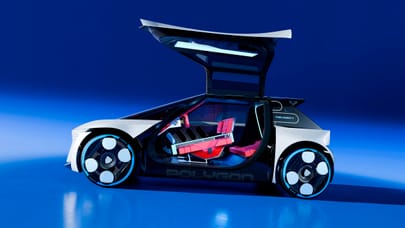
The Jaguar C-X75 is no more
It is with great regret that we have to inform you of the death of the Jaguar C-X75. The British hybrid supercar, first seen at the Paris Motorshow in 2010, and which you can listen to here, was due to enter production next year, the firm intending to build 250 cars each costing close to £1 million.
That now won’t happen, and economic reasons are to blame, principally the fact that Jaguar no longer believes it can make an “adequate return on investment”.
Linked to that, inevitably, is the current global economic situation. “By the time we got to market with this, we expected normality to have returned”, said brand director Adrian Hallmark, “and even though we could carry on and could fund it, it’s not a major part of our investment. When we look at the global environment and the austerity and the difficulties being faced out there, to bring to market an £800,000-£1 million supercar just feels wrong”.
This is a great shame, denying us the chance of seeing the C-X75 line up against the holy trinity of 2013 hypercars: Porsche’s 918 Spyder, McLaren’s P1 and Ferrari’s new ‘Enzo’.
It would have been a fascinating battle, because Jaguar, in conjunction with the Williams F1 team, had made great progress with the C-X75. True, the proposed jet engines had been ditched (they worked beautifully, apparently, but emissions in the start-up phase were too high), but the turbocharged and supercharged 1.6-litre four cylinder was producing a reliable 500bhp and the electric motor specially developed for the project weighed just 23kg, had a mere 17 moving parts and was compact enough to fit in the space required by a single cylinder, yet developed 295lb ft.
That was to be driven by a “revolutionary” liquid and air-cooled battery pack, capable of an unassisted range of 60 miles. In total 17 radiators and a total intake area of 1.5 square metres were needed to keep things cool and allow the car to run properly. And the quoted figures were impressive: 663lb ft of torque and up to 900bhp. What this would have meant for performance was a 0-60mph time of 2.8secs and a 0-100mph time; “quicker than a Veyron”, according to Hallmark. Top speed was forecast at 205mph, and predicted emissions were sub 100g/km.
However, while all these figures are now largely meaningless, the technology behind them isn’t. Jaguar is claiming to have learned a massive amount during the C-X75’s development, enough to be able to use many of the elements in future projects.
Expect the 295lb ft super-compact electric motor and battery to appear in a hybrid concept before too long, and further down the line to possibly replace one of the cylinders in a range extender model.
The small capacity engine looks destined for a bright future, with Hallmark saying, “the new engine family that we are developing for production in the Wolverhampton plant will be able to use the high pressure, supercharged, turbocharged systems to give us high performance versions of four cylinder engines”. Incidentally, the team has looked at possibly creating a V8 by mashing two of these fours together…
All in all, Jaguar has 100 patents relating to the C-X75 and claims that “at least 60 per cent of what we actually spent… will be recycled into our road cars.”
Top Gear
Newsletter
Thank you for subscribing to our newsletter. Look out for your regular round-up of news, reviews and offers in your inbox.
Get all the latest news, reviews and exclusives, direct to your inbox.
Besides the powertrain technology, this includes carbon brakes and a method of casting alloy wheels that removes 40 per cent of their weight. The C-X75 also featured some amazing aerodynamic solutions, including an exhaust blown diffuser. Again, Hallmark claims this has relevance for future sports cars. Likewise the jets, which Jaguar believes have relevance not just for future automotive applications, but for “domestic power generation”. Imagine: a turbine providing your hot water or electricity…
And for the time being, development is continuing. Why? Because Jaguar has five working prototypes and at the end of this phase – anticipated to be next April/May – is likely to sell two of them to private collectors. That will likely be done via auction, allowing the 100 people who had made serious expressions of interest to find out who really has the deepest pockets. Just two, instead of the 250 originally planned, but couldn’t we claim this as a production run?
Trending this week
- Car Review
BMW iX3








